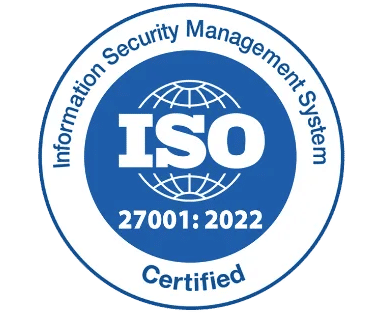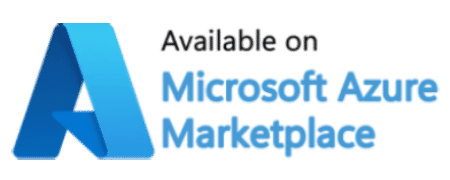
Unlock Growth with Employee Performance Management 365
Performance Management 365 helps businesses track progress, provide feedback, and evaluate employees with employee performance software to maintain goal alignment.

Trusted by 11700+ businesses from 167 countries
%203_oXiPG63UI.png)

_K8nzNx4OE.png)











_JiluXJRGNl.svg)






























Boost Team Performance and Efficiency with Performance Management 365
Performance Management is all about people, not just processes. Strengthen teams, align goals, and boost productivity by empowering managers and building a culture of high performance.
_t-YZH0fQk.png)
Why Choose Performance Management 365?
Employee Performance Software makes tracking and improving employee performance simple. Set clear goals, give feedback, and track progress in one easy-to-use platform. Keep your team motivated, support growth, and encourage continuous feedback effortlessly!
Cyber Security
Cyber Security in GCC & GCC High within the Microsoft environment places high importance on stringent measures to protect sensitive government data, ensuring security with robust defenses and Microsoft applications.
GCC & GCC High
Our apps are built for GCC & GCC high tenants of US Federal clouds.
SOC2 Type II Certified
Our apps ensure security, compliance, and data protection
MS Azure Marketplace
Our apps are tested by Microsoft and available on MS Azure Marketplace
Microsoft Appstore
Our innovative applications are available on the Microsoft Appstore.
Customer Support
Your Support Team merges technical prowess with sincere care, fostering trust through expertise and empathy. They build lasting relationships, transcending mere service to create meaningful connections.
AI Enabled Apps
Our innovative apps are built with the options of Azure AI, Copilot, and custom AI solutions.
Swift Deployment
Choose any deployment method—Teams, Outlook, or SharePoint—that suits your preferences.
Modern UI/UX
Every app is crafted using the latest Fluent UI, ensuring seamless functionality across all devices.
Free Updates
Our valued subscribers enjoy unlimited support, enhancements, features, and updates.

Self-Review
Employees can reflect on their work, recognize their accomplishments, and pinpoint areas for improvement.

Performance Automation
This tool automates tracking goals and providing feedback, saving time and ensuring accurate, meaningful reviews.

KRA
Define clear, measurable Key Result Areas to track employee progress and ensure performance aligns with company goals.

Skills and Competency
Evaluate and track employee skills to make sure they meet job requirements and are ready for future challenges.

1:1
Hold impactful one-on-one meetings to offer personalized feedback, schedule sessions, and address any concerns instantly.

Continuous & 360° Feedback
Encourage growth through continuous feedback from peers and managers, ensuring clear performance and development insights.

Praise and Recognition
Celebrating wins and recognizing hard work boosts morale and keeps quick, genuine acknowledgments.

Performance Insights
Get real-time data on employee performance, spotting strengths, areas to improve, and chances for growth.
_8Ep7atGxi.png)
Performance Improvement Plan
Support growth by offering employees a customized plan to tackle challenges and succeed.
_daydqQi5lV.svg?updatedAt=1735815636988)
Email Notifications
Receive timely notifications for performance reviews, feedback, and goal progress. This helps you stay proactive and aligned with your team's development.

KPI Tracking
Set and monitor Key Performance Indicators to measure employee success and make sure their efforts align with company goals.

Weightage and Category
Tailor performance ratings by assigning weightages and categories that highlight the most important aspects of each role.
Work Smarter with AI Helpdesk 365 Software
Microsoft teams ticketing system – Helpdesk 365 helps you automate, organize, and complete tasks easily. No matter how big or small your business is, it helps you work smarter, solve problems faster, and boost productivity without any hassle.
Smart Ticket Routing
Tickets are intelligently routed to the right team or agent, with AI factoring in skills, workload, and urgency to optimize solutions.
Round-the-Clock Virtual Assistant
A virtual assistant powered by AI delivers 24/7 support, answering queries and guiding users through troubleshooting steps.
Sentiment Analysis
Messages are analysed using AI to detect emotions, identifying frustrated customers to ensure responses are prioritized
Dynamic Priority Setting
Ticket priorities are dynamically set based on severity, with AI ensuring that critical issues receive immediate attention.
Automated Customer Follow-Up
Follow-ups are automated through AI, confirming resolution and enhancing customer satisfaction post-ticket closure.
Intelligent Workload Balancing
Agent activity is monitored, and AI ensures tickets are evenly allocated to maintain efficiency and prevent fatigue.
Live Status Notifications
Real-time updates are sent through AI-driven notifications, keeping users and agents informed for a transparent process.
Actionable Feedback Insights
Customer feedback is analysed by AI to highlight strategies and pinpoint areas needing improvement for better service.
Proactive Issue Prediction
AI identifies trends in past tickets to predict potential issues, enabling teams to proactively prepare and address problems.
Microsoft Performance Management Stands Out
Create a culture of ongoing growth and success with powerful tools that support employees and simplify performance management.
Benefits of Performance Management Software
Boost your team’s potential, improve performance, and encourage growth with efficient, time-saving performance management software.
Enhance Employee Engagement
Keep employees motivated and on track with clear goals, consistent feedback, and chances to grow.
Data-Driven Decisions
Leverage real-time performance data to make informed decisions, track progress, and identify key trends.
Simple Collaboration
Make teamwork easier with smooth Microsoft 365 integration, sharing goals, feedback, and updates with ease.
Save Time
Automate performance tracking and feedback, allowing more focus on growth and less on administrative tasks.
Organizational Performance
Align team goals, track progress, and offer ongoing feedback to achieve better results across the company.
Improve Talent Development
Identify skill gaps, offer personalized learning opportunities, and support employees in their career growth journey.
Boost Productivity with Seamless Integrations
Build custom apps, automate tasks, visualize data, and use chatbots to improve performance management.
_eXEyQVXbrh.png?updatedAt=1735914125187)
Power Automate
Save time by automating ticket updates, notifications, and approvals for smoother support management.
_Kds_Hz7QcQ.png?updatedAt=1735914124948)
Power BI
Generate clear and detailed reports to better analyse support performance and make informed decisions.
_fKJEyRsAdu.png?updatedAt=1735914124951)
Power Apps
Use AI chatbots to instantly answer common customer support queries or provide ticket updates.
_F7DLaFcFoe.png?updatedAt=1735914125177)
Power Virtual Agent
Build custom apps to enhance ticketing workflows and integrate seamlessly with Performance Management 365.
Performance Management 365 Plans
Standard
$7999
per month, billed yearly
Standard Plan Features
- 10 users
- 2 support tickets per annum
- Free updates via MS store
- Integrates with Office 365
- SharePoint app only
- Data stays in SharePoint
- Multiple roles
Plus
$14999
per month, billed yearly
Everything in Standard and…
- 25 users
- 4 support tickets per annum
- Free updates with support
- KRA Categories
- Custom Logo
- 5 Point rating scale
- Notifications
- Multiple departments & groups
- Multiple appraisal cycles
Premium
$19999
per month, billed yearly
Everything in Plus and…
- 40 users
- Additional users at $2/user
- Unlimited support tickets
- Microsoft Teams App
- Self-Review
- KRA bank
- KRA templates
- Weighted rating option
- Dashboard - Performance Analytics
- Rating to verbatims
- 360 degree feedback module
- 1:1 meeting tracker Module
- Smart notifications
Enterprise
$24999
per month, billed yearly
Everything in Premium and…
- 50 users
- Additional users at $3/user
- Multiple Reviewers
- 9 point enterprise rating scale
- Multiple rating scales options
- Collaboration timelines
- Dashboard - Org analytics
- 1:1 Meetings on Calendar
- Customizable email notifications
- Customize with Power Automate
- Power BI & Power Apps Integration
- Dedicated Account Manager
- Integration with KRAs
Using Azure? now you can buy on Azure Marketplace or using your enterprise agreement
Customer Testimonials
Employee Performance Review Software delivers result that matter—straight from the people who use it!
Schedule a Free Personalised Demo or Free Trail
Discover the full potential of our product with a complimentary trial today!
%202%20(1)_UZpBvPU7A.png?updatedAt=1736170678886)
Frequently Asked Questions
What is the Purpose of Employee Performance Software?
Every company does appraisals, and every employee needs them to grow. Employee Performance Software provide continuous feedback, 360-degree feedback, and valuable performance insights. They help track progress, set goals, and align employee growth with company success. This ensures both personal development and organizational growth.
What are the benefits of using Employee Performance Appraisal Software?
Employee Performance Appraisal Software enhances efficiency by automating performance tracking, feedback collection, and review processes. It reduces manual effort, ensures accuracy, and provides real-time insights, allowing managers to focus on employee development and strategic decision-making. Employee Performance Appraisal Software helps identify top performers and areas for improvement, fostering a culture of continuous growth and productivity.
Why is Employee Performance Software important for businesses?
Employee Performance Software helps businesses improve productivity by providing real-time feedback, goal tracking, and automated performance reviews. It ensures fair evaluations, boosts employee engagement, and streamlines workforce management. With data-driven insights, managers can make better decisions to enhance team performance. Investing in Employee Performance Software leads to a more efficient and motivated workforce.
Why is an Annual Employee Performance Review important, and how can software improve it?
An Annual Employee Performance Review is crucial for assessing employee growth, setting future goals, and providing structured feedback. Employee Performance Appraisal Software automates this process by tracking performance data, facilitating continuous feedback, and generating detailed reports, making evaluations more efficient and data-driven.
How Can Employee Performance Review Software Helps to Improve Employee Engagement?
Employee Performance Review Software boosts employee engagement by providing clear goals, ongoing feedback, and regular recognition. Employees feel more motivated and aligned with company objectives when they receive consistent feedback and know where they stand in their personal growth. Employee Performance Review Software helps managers identify skill gaps and training needs, fostering continuous employee development and career progression.
How Does Employee Performance Evaluation Software Automate Performance Reviews?
Performance Management simplifies the review process by automating performance tracking, feedback collection, and performance reviews. Employee Performance Evaluation Software enables managers to focus on key insights and meaningful conversations while the system handles the logistics, saving valuable time and improving accuracy.
How does Enterprise Performance Management Software enhance the employee review process?
Enterprise Performance Management Software improves the employee review process by automating performance tracking, facilitating real-time feedback, and generating comprehensive reports. It helps organizations align individual goals with business objectives, ensuring a more strategic and data-driven approach to performance management.
How Does Performance Management Ensure Data Security and Privacy?
Performance Management ensures your data is fully protected by using advanced encryption, strict access controls, and compliance with global privacy standards. With automated updates and regular security enhancements, your performance management data remains safe and confidential.
What features should I look for in Employee Performance Evaluation Software?
When choosing Employee Performance Evaluation Software, look for features like goal setting, real-time feedback, automated performance reviews, 360-degree evaluations, data analytics, and integration with HR systems. These functionalities help ensure fair, efficient, and data-driven performance assessments. Employee Performance Evaluation Software enhances transparency and accountability, ensuring employees clearly understand expectations and career growth opportunities.
Why is Employee Performance Tracking important, and how can software improve it?
Employee Performance Tracking is essential for monitoring progress, identifying strengths and weaknesses, and ensuring employees meet their goals. Enterprise Performance Management Software automates tracking by collecting real-time performance data, generating insights, and providing managers with a clear overview of individual and team productivity. This leads to more informed decision-making and improved employee development.





_svxLrd-8yH.png)

_2VYSFUTN5m.png)
_2djTKNocf.png)




_Rapo0hRMBy.png)










